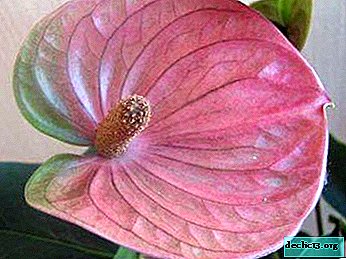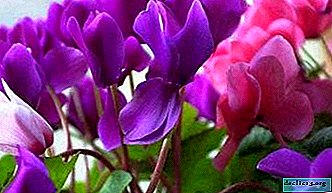Practical recommendations for growing anthurium cavalli. Features of care and flower photo

Anthurium cavalli is a perennial plant that leads an epiphytic way of life.
The plant is not picky in care, therefore it actively decorates terraces, loggias and window sills.
In this article you will find a botanical description and the history of this plant, as well as a detailed description of its appearance.
In addition, here you will learn how to care for this flower and find its photo.
Botanical description and history
Anthurium Cavalli was brought to Europe in the 19th century, but only at the end of the 20th century this flower began to receive close attention from gardeners. This plant requires a comfortable atmosphere and regular maintenance.. Since the flower lives in South America, it is necessary to create similar conditions in the room for comfortable growth and development of culture.
Description of appearance and photo
Anthurium cavalli is a perennial culture that belongs to the aroid. It lives on the bark of trees. The flower is unusual, since the ear and bract near it have a delicate lilac color. The leaves are large, oval in shape and dark green in color with a glossy surface.
The plant blooms well at home: in the summer on one bush 6-10 inflorescences are formed, and in the winter - 3-4 pieces. Among the people, the flower was called male happiness, as it is presented exclusively to men.The fruit of the plant is presented in the form of a fleshy juicy berrywhich contains seeds. They can not be eaten, because they are poisonous, like the rest of the parts.



Home Care
Temperature
A tropical plant feels great on the windowsills of ordinary apartments, where the temperature regime is observed 22-24 degrees. In autumn and winter, when the temperature in the house drops, the temperature regime of 15-17 degrees is allowed. A slight decrease in temperature is allowed at night and in winter, when the plant falls into a period of relative dormancy.
Shine
Anthurium cavalli normally tolerates the shadow, but in bright light the culture may suffer. The best place is the east and west windows. The plant can be grown on the southern windowsill, but then you have to take care of the shading.
In spring and summer, you can take anthurium into the air, only creating him protection from strong winds, direct sunlight and precipitation.
Air humidity
For the full growth and development of a tropical flower, it is necessary to provide it with a moisture content of 75-80%. For these purposes, you must use:
- irrigation of the green part with warm water;
- household humidifiers;
- setting a pot with a plant in a pan filled with wet gravel.
Watering
Humidification must be balanced: Do not allow the soil to dry out and its waterlogging. Between watering, the topsoil should have time to dry out. The water in the sump must be drained. In summer and winter (if there is artificial lighting), it is necessary to water the flower abundantly.
The soil
 For the Cavalli Anthurium to grow well, bloom and bear fruit, it will need a light and breathable soil with a pH of 5.5-6 units.
For the Cavalli Anthurium to grow well, bloom and bear fruit, it will need a light and breathable soil with a pH of 5.5-6 units.
To prepare the soil with your own hands, the following components are needed:
- high peat - 2 parts;
- sheet land - 2 parts;
- sand - 1 part;
- coniferous tree bark - 1 part.
You can add crushed charcoal to the soilwhich disinfects the earth. For epiphytic anthuriums, auxiliary components will be sphagnum moss and perlite, which loosen the already prepared soil purchased in the store.
Pot
The pot should be chosen not too spacious and deep, otherwise the plant will actively form the root system, which will adversely affect the decorative appearance.
You need to choose a pot of clay, which will let air through, providing the root system with oxygen.Pruning
To trim the cavalry anthurium, the following recommendations should be observed:
- Disinfect sharp scissors with alcohol.
- Cut off a blooming inflorescence, the cover of which gradually turns green or turns brown.
- Remove all wilted or yellowed leaves.
- The places of cuts should be treated with crushed activated carbon.
Top dressing
The plant has a bad attitude to an excess of fertilizers. It is recommended to introduce complex formulations for aroid or orchids in spring and summer. Do this every 2-3 weeks, but make in a dosage 2 times less than that indicated in the instructions.
Transfer
Before the plant is 5 years old, it will be replanted once a year. Do it at the beginning of spring. The diameter of the container for the cavalry anthurium should be 2 cm larger than the previous one.
Procedure:
- To lay a drainage layer at the bottom of the pot - 3 cm.
- Add nutrient soil by filling 1/3 of the container.
- By transshipment, put the plant in a pot, gently spread the roots.
- Fill the pot carefully with earth so that there is no space between the roots.
- Water the plant and set for several days in a shaded place.
Wintering
With the onset of winter and the heating season, the humidity in the room rises. The first step is to move the plant away from batteries and other heat sources. It is also necessary to use special humidifiers. It is infrequent to water the plant in winter - 1 time in 1-1.5 weeks. Fertilizing in the winter is not recommended.
Propagation Features
Cuttings
 Reproduction by cuttings is as follows:
Reproduction by cuttings is as follows:
- Separate the stem shoot or upper stalk.
- Lay it on clean cloth for 2 hours so that the wound lasts.
- Plant the stalk in perlite or clean sand.
- Cover the container with a transparent jar.
- From time to time, raise the can for ventilation and watering the soil.
- When the roots and first leaves are formed, the stalk can be transplanted into ordinary soil intended for anthurium.
Seed cultivation
To obtain anthurium from seeds, the following procedure must be observed:
- For manual pollination, it is necessary to transfer pollen from one flower to another from time to time with a piece of cotton wool.
- After a while, a fetus forms, which ripens in 8 months. Once it ripens, then use tweezers to remove it and rinse in a weak solution of potassium permanganate.
- Arrange the collected seeds on a substrate and gently press.
- Cover the container with seedlings with a transparent film. When a sprout is formed and leaves a few leaves, transfer it to a soil mixture consisting of charcoal, peat, leaf soil and humus, taken in equal proportions.
Diseases and Pests
The following diseases are dangerous for Cavalli Anthurium:
- Septoria. Yellow-brown spots appear on the plant. All affected parts must be cut off and the earth treated with a solution of copper sulfate.
- Anthracnose. This is a disease in which the tips of the leaves of a plant dry. For treatment, you need to remove all affected parts of the plant and treat the flower with Bordeaux fluid.
Of the pests, the danger is:
- aphid;
- spider mite;
- scale shield.
To save the plant, it is necessary to remove pests and traces of their vital functions mechanically. Moisten a cotton pad in a soap solution and treat the leaves, and then treat with an insecticide.
Similar flowers
 The following plants look like anthurium cavalli:
The following plants look like anthurium cavalli:
- Calla. This is a grassy perennial that surprises with its exquisite flowers on elongated peduncles.
- Caladium. A plant with highly decorative leaves of various colors.
- Wingfly. This flower lives on the shores of lakes and wetlands.
- Eucharis. The leaves of the plant are very dark green, the flowers are white with a yellow center.
- Amorphophallus. This is a deciduous plant belonging to the aroid family.
Anthurium Cavalli is a decorative culture suitable for growing at home. It is in great demand due to its appearance, as looking at a flower gives the impression that it is artificial. The reason is that leaves and flowers have a glossy surface.

















